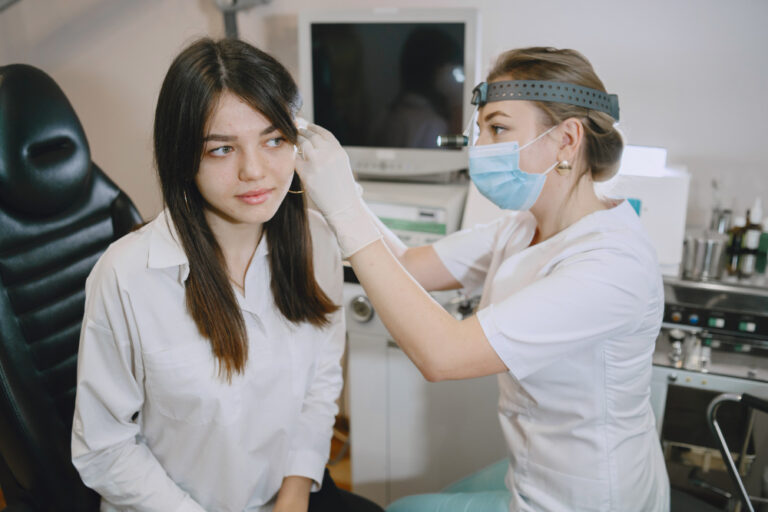what is commonly misdiagnosed as pink eye
Are you seeing red, feeling irritated, and convinced it’s just another case of pink eye? Think again! Your eyes might be playing tricks on you because what you thought was a common case of conjunctivitis could actually be something entirely different. Let’s dive into the world of eye conditions commonly misdiagnosed as pink eye to unravel the mystery behind your ocular discomfort.
What Is Commonly Misdiagnosed as Pink Eye?
Allergies
Itchy, watery eyes? Don’t be too quick to blame it on pink eye; allergies could be the sneaky culprit behind your discomfort. Pollen, dust, pet dander – these allergens can trigger an inflammatory response in your eyes that mimics the symptoms of conjunctivitis.
Styes
That tender bump along your eyelid might seem like a classic stye (hordeolum), but it’s not always what it appears to be. Styes are often mistaken for pink eye due to their similar redness and swelling, leading to misdiagnosis and improper treatment.
Iritis
Inflammation of the iris, known as iritis or anterior uveitis, can present with redness and pain in the eye – easily confused with pink eye. However, iritis requires specialized care beyond standard pink eye treatments.
Keratitis
Corneal inflammation or keratitis can cause redness and sensitivity to light that may mask itself as a case of pink eye. Differentiating between the two is crucial for effective management and recovery.
Blepharitis
Chronic inflammation of the eyelids called blepharitis can also manifest with similar symptoms to pink eye. Proper evaluation by an eye care professional is essential for accurate diagnosis and tailored treatment options.
Allergies
Have you ever experienced itchy, watery eyes that make you want to rub them constantly? Allergies could be the culprit behind your eye discomfort. When allergens like pollen or pet dander come into contact with your eyes, they can trigger an allergic reaction leading to redness and irritation.
Allergic conjunctivitis is a common condition often mistaken for pink eye due to similar symptoms. The key difference lies in its underlying cause – allergies rather than infection. It’s essential to differentiate between the two to receive appropriate treatment.
Antihistamine eye drops or allergy medications may help alleviate symptoms associated with allergic reactions affecting the eyes. If you suspect your eye irritation is more than just pink eye, consulting with an optometrist can provide clarity on the root cause of your discomfort.
Don’t let allergies go undiagnosed when seeking relief for your irritated eyes; understanding the source of your symptoms is crucial for effective management.
Styes
Styes, often mistaken for pink eye due to their similar symptoms, are actually small red bumps that form on the eyelid. These painful lumps are caused by bacterial infections in the oil glands of the eyelid. When a stye develops, it can lead to discomfort and swelling around the affected area.
Unlike pink eye, which is characterized by redness and irritation in the white part of the eye, styes primarily affect the eyelids themselves. The presence of a stye can cause tenderness and sensitivity to touch, making it easy to mistake for other common eye conditions.
While pink eye is typically viral or bacterial in nature and affects the conjunctiva lining of the eyes, styes are localized infections that require different treatment approaches. It’s essential not to misdiagnose a stye as pink eye to ensure proper care and management of these distinct conditions.
Iritis
Have you ever experienced redness and severe eye pain that made you rush to the doctor, fearing it’s pink eye? It might surprise you to learn that there are other conditions often mistaken for this common ailment. One such condition is iritis.
Iritis, also known as anterior uveitis, is the inflammation of the iris – the colored part of your eye. This condition can cause symptoms similar to pink eye, such as redness and discomfort. However, unlike pink eye which is typically viral or bacterial in nature, iritis is usually linked to underlying issues like autoimmune diseases or infections.
It’s essential not to brush off persistent eye symptoms as just another case of pink eye without proper evaluation by a healthcare professional. If left untreated, iritis can lead to serious complications affecting your vision. So next time you experience unusual eye symptoms, consider the possibility of iritis before assuming it’s just another bout of pink eye.
Keratitis
Have you ever experienced eye redness, pain, or blurred vision and jumped to the conclusion that it’s just pink eye? Well, sometimes what seems like a common case of conjunctivitis could actually be keratitis.
Keratitis is the inflammation of the cornea – the clear front part of your eye. It can be caused by infections, injuries, or wearing contact lenses for too long. The symptoms can mimic pink eye but may also include sensitivity to light and a feeling of something stuck in your eye.
If left untreated, keratitis can lead to serious complications like vision loss. That’s why it’s essential to consult an eye care professional if you suspect something more than just pink eye going on with your eyes.
Don’t brush off any persistent discomfort or changes in your eyesight as a simple case of pink eye; it could be keratitis demanding prompt attention for proper diagnosis and treatment.
Blepharitis
Ah, the often misunderstood and misdiagnosed condition of blepharitis. It may not be as commonly known as pink eye, but its symptoms can easily be mistaken for other eye issues.
Blepharitis is an inflammation of the eyelids that can cause redness, itching, and irritation. This pesky problem arises when oil glands near the base of the eyelashes malfunction or become clogged, leading to discomfort and sometimes even blurry vision.
Many people mistake blepharitis for simple tired eyes or even allergies due to its overlapping symptoms. However, proper diagnosis by a healthcare professional is crucial in determining the right course of treatment.
If left untreated, blepharitis can lead to more severe complications like chronic dry eyes or styes. So next time your eyes feel off, it might just be worth considering if it’s more than meets the eye – pun intended!
Reasons for Eye Irritation Beyond Pink Eye
Ever experienced eye irritation that wasn’t just your run-of-the-mill pink eye? Sometimes, those red, itchy eyes could be due to allergic conjunctivitis. Pollen, pet dander, or dust mites may trigger this condition causing discomfort and redness.
Dry eye syndrome is another sneaky culprit for eye irritation. Insufficient tears or poor tear quality can lead to dryness and irritation in the eyes, often mistaken for pink eye.
Blepharitis, an inflammation of the eyelids’ edges, can also cause discomfort similar to pink eye symptoms. Keeping good eyelid hygiene is essential to manage this condition effectively.
Understanding these reasons beyond typical pink eye causes can help you identify the root issue accurately and seek targeted treatment for relief from irritating symptoms without delay.
Allergic Conjunctivitis
Suffering from itchy, red, and watery eyes? It might not always be a simple case of pink eye. Allergic conjunctivitis is a common condition often mistaken for the contagious pink eye due to similar symptoms.
When allergens like pollen or pet dander come into contact with your eyes, they trigger an allergic reaction leading to inflamed and irritated eyes. This can easily be misdiagnosed as pink eye if the underlying cause isn’t properly identified.
Unlike bacterial or viral conjunctivitis, allergic conjunctivitis is not contagious but can still significantly impact your daily life. Managing this condition involves identifying and avoiding triggers while using antihistamine eye drops or oral medications to alleviate symptoms.
Consulting with an eye care professional is crucial for accurate diagnosis and tailored treatment plans that address the root cause of your discomfort. Don’t brush off persistent eye irritation as just another case of pink eye; it could be allergic conjunctivitis demanding specialized care.
Dry Eye Syndrome
Do you ever experience a persistent gritty or dry sensation in your eyes? You might be dealing with Dry Eye Syndrome. This condition occurs when your eyes can’t produce enough quality tears to keep them lubricated, leading to discomfort and irritation.
Factors like aging, prolonged screen time, certain medications, or environmental conditions can contribute to the development of Dry Eye Syndrome. Symptoms may include redness, sensitivity to light, and blurred vision.
Managing Dry Eye Syndrome typically involves using artificial tears or prescription eye drops to help lubricate the eyes. In some cases, lifestyle adjustments like taking breaks from screens or using a humidifier can also provide relief.
If you suspect you have Dry Eye Syndrome, consult with an eye care professional for proper diagnosis and personalized treatment options tailored to your specific needs.
Blepharitis
Blepharitis is a common eye condition that often gets misdiagnosed as pink eye due to similar symptoms. It involves inflammation of the eyelids, leading to redness, itching, and irritation. Unlike pink eye, which affects the conjunctiva, blepharitis primarily targets the eyelid margins.
The main culprits behind blepharitis are bacteria or skin conditions like dandruff. These factors can cause oily flakes to accumulate at the base of your eyelashes, resulting in discomfort and sometimes even blurry vision.
Treatment for blepharitis usually involves keeping your eyelids clean by gently washing them with warm water and using prescribed medications if necessary. In severe cases, antibiotics may be required to combat bacterial overgrowth on the lids.
If you’re experiencing persistent eye irritation that doesn’t seem to improve with traditional pink eye treatments, it’s essential to consult an eye care professional for accurate diagnosis and appropriate management of blepharitis.
Targeted Treatment
When it comes to addressing eye conditions beyond pink eye, targeted treatment plays a crucial role. Tailored approaches are essential in managing specific issues that mimic symptoms of pink eye but require different interventions.
With allergic conjunctivitis, pinpointing the allergen triggering the reaction is key to effective treatment. Anti-allergy medications and avoiding triggers can help alleviate symptoms associated with this condition.
In cases of dry eye syndrome, targeted treatments may involve artificial tears, prescription medications, or even procedures like punctal plugs to help retain moisture on the ocular surface.
For blepharitis, a precise regimen including warm compresses and eyelid hygiene can be beneficial in easing discomfort and inflammation around the eyes.
Targeted treatment strategies aim at tackling underlying causes rather than just alleviating symptoms temporarily. By identifying and addressing specific issues accurately, individuals can experience better outcomes when faced with conditions commonly misdiagnosed as pink eye.
Preventing Complications
When it comes to eye health, preventing complications is key. One of the best ways to avoid issues with your eyes is by practicing good hygiene. This includes regularly washing your hands before touching your eyes or face.
Additionally, avoiding sharing personal items like towels or makeup can help prevent the spread of infections that could lead to complications.
Protecting your eyes from environmental irritants, such as dust and smoke, can also go a long way in maintaining their health. Wearing appropriate eyewear when necessary, like goggles during certain activities, can provide an extra layer of defense.
Regularly visiting an eye care professional for check-ups can catch any potential problems early on and prevent them from escalating into more serious conditions. Remember, proactive measures today can save you from future complications down the road.
Conditions Mistaken for Pink Eye
Have you ever experienced redness and irritation in your eyes, only to be quickly diagnosed with pink eye? While conjunctivitis is a common condition, there are several other eye issues that can mimic its symptoms. One such condition is hordeolum, more commonly known as a stye. This painful lump on the eyelid can often be mistaken for pink eye due to its similar appearance.
Another condition frequently confused with pink eye is blepharitis, an inflammation of the eyelids causing redness and discomfort. Keratitis, an infection or inflammation of the cornea, can also present with symptoms resembling conjunctivitis, leading to misdiagnosis if not properly evaluated by a healthcare professional.
Iritis or uveitis, although less common than pink eye, shares some overlapping symptoms like redness and light sensitivity. Additionally, glaucoma can sometimes cause red eyes and discomfort mistakenly associated with conjunctivitis. It’s crucial to seek proper medical evaluation for accurate diagnosis and treatment tailored to your specific condition.
Hordeolum (stye)
Have you ever experienced a small, painful bump near your eyelid that made blinking uncomfortable? This could be a stye, also known as a hordeolum.
Styes occur when oil glands in the eyelids become blocked and infected. They can cause redness, swelling, and tenderness in the affected area. While they may resemble pink eye at first glance due to their appearance and discomfort, styes are actually quite different.
Most styes resolve on their own within a few days with simple home treatments like warm compresses. However, if the symptoms persist or worsen, it’s essential to seek medical attention to rule out any complications or other underlying conditions.
Remember not to rub or squeeze a stye as it can spread infection and prolong healing time. If you suspect you have a stye, consult with an eye care professional for proper diagnosis and treatment guidance.
Blepharitis
Blepharitis is a common eye condition that often gets mistaken for pink eye due to similar symptoms. It involves inflammation of the eyelids, causing irritation and redness. Many people experiencing blepharitis may notice crusty debris at the base of their eyelashes or feel like something is stuck in their eye.
The key difference between blepharitis and pink eye is that blepharitis specifically affects the eyelids’ margins, while pink eye typically involves redness and swelling of the conjunctiva. This distinction is crucial in ensuring proper treatment for each condition.
Symptoms of blepharitis can vary from person to person but commonly include itching, burning sensations, and sensitivity to light. Proper hygiene practices like regularly cleaning your eyelids can help manage blepharitis symptoms and prevent flare-ups. If you suspect you have blepharitis, consult with an eye care professional for accurate diagnosis and personalized treatment options tailored to your needs.
Keratitis
Keratitis is a condition that can often be misdiagnosed as pink eye due to similar symptoms. It involves the inflammation of the cornea, which is the clear, dome-shaped surface that covers the front of your eye. This inflammation can result from infections, injuries, or wearing contact lenses for extended periods without proper hygiene.
Symptoms of keratitis may include eye redness, pain, blurred vision, sensitivity to light, and excessive tearing. If left untreated, it can lead to vision loss or scarring of the cornea. Unlike pink eye caused by viral or bacterial infections easily treatable with antibiotics or antiviral medications; keratitis might require specialized treatments such as medicated eye drops or ointments specifically targeting the underlying cause.
It’s crucial not to overlook symptoms that persist beyond what you’d typically expect with pink eye and seek prompt medical attention if you suspect keratitis. Proper diagnosis and treatment are essential in preserving your eyesight and preventing potential complications associated with this condition.
Iritis or uveitis
Ever experienced eye redness, pain, and sensitivity to light that you thought was just pink eye? Think again. Iritis or uveitis is a condition often mistaken for the common pink eye but requires different treatment.
Iritis or uveitis is an inflammation inside the eye that affects the iris and surrounding tissues. It can cause blurred vision, eye pain, redness, and increased light sensitivity. If left untreated, it can lead to serious complications like glaucoma or cataracts.
Unlike pink eye which usually clears up on its own in a few days, iritis or uveitis demands prompt medical attention from an ophthalmologist. Treatment may involve steroid eye drops to reduce inflammation and prevent lasting damage.
So next time you suspect pink eye but symptoms persist or worsen, consider the possibility of iritis or uveitis – your eyes will thank you for being vigilant!
Glaucoma
Glaucoma, often mistaken for pink eye due to redness and irritation, is a serious eye condition that affects the optic nerve. Unlike pink eye, which is usually harmless and resolves on its own, glaucoma can lead to permanent vision loss if left untreated. This silent thief of sight can go unnoticed until significant damage has occurred.
The key difference lies in the underlying cause – while pink eye is typically caused by viral or bacterial infections, glaucoma results from increased pressure within the eye damaging the optic nerve over time. It’s essential to differentiate between the two conditions promptly to prevent irreversible harm.
Regular eye exams are crucial for early detection of glaucoma since symptoms may not be noticeable until later stages. If you experience persistent redness or discomfort in your eyes that doesn’t improve with usual treatments, consulting an ophthalmologist for a thorough evaluation is vital for preserving your vision health.
Common Eye Conditions Resembling Pink Eye
Have you ever mistaken dry eyes for pink eye? It’s more common than you think. Dry eye syndrome can cause redness, irritation, and even a gritty feeling in your eyes that may mimic the symptoms of conjunctivitis.
Allergies can also be sneaky culprits when it comes to resembling pink eye. The tell-tale redness and itchiness might lead you to believe it’s an infection when in reality, it could just be your body reacting to allergens like pollen or pet dander.
Blepharitis is another condition that can mirror the symptoms of pink eye, with inflamed eyelids and crusty debris near the base of your lashes. Keeping up with proper eyelid hygiene is key to managing this chronic condition.
If you wear contact lenses, chances are you’ve experienced some discomfort that made you question if it was pink eye. Contact lens wear can sometimes cause redness and irritation similar to conjunctivitis but requires different treatment approaches.
And let’s not forget about subconjunctival hemorrhage – a burst blood vessel on the white part of your eye which can create a vivid red spot mimicking the appearance of infectious conjunctivitis.
Dry eye
Do you ever experience dry, gritty eyes that just won’t seem to go away? Dry eye syndrome is a condition that affects many individuals and can often be mistaken for pink eye. It occurs when your eyes don’t produce enough tears or the right quality of tears to keep them lubricated. This can lead to discomfort, redness, and even blurred vision at times.
Factors like aging, certain medications, environmental conditions, and prolonged screen time can contribute to dry eye symptoms. It’s essential to address this issue promptly as untreated dry eyes can potentially damage the surface of your eyes over time.
To alleviate dry eye discomfort, using artificial tear drops or ointments may help provide relief by adding moisture to your eyes. Moreover, staying hydrated and taking breaks from screens can also promote better eye health in the long run.
If you suspect you might have dry eye syndrome instead of pink eye, consulting with an optometrist or ophthalmologist for a proper diagnosis and treatment plan is crucial. Don’t ignore persistent eye irritation; it’s always best to seek professional advice for optimal eye care.
Allergies
Do you often mistake itchy, red eyes for a case of pink eye? It might actually be allergies causing the discomfort. Allergies can trigger inflammation in the eyes, leading to symptoms like watery discharge and itching. The similarity in appearance with pink eye can make it easy to misdiagnose.
When allergens like pollen or pet dander come into contact with your eyes, they can set off an allergic reaction that mirrors the signs of conjunctivitis. This misinterpretation could delay proper treatment for your condition.
If you find yourself reaching for over-the-counter pink eye remedies without relief, consider the possibility of allergies as the culprit behind your irritated eyes. Consulting with an optometrist or allergist can help pinpoint the cause and provide targeted solutions for symptom relief.
Blepharitis
If you’ve ever experienced red, swollen eyelids and crusty debris around your eyes, you might have thought it was just pink eye. However, there’s a high chance it could be blepharitis – a common condition often mistaken for conjunctivitis.
Blepharitis is an inflammation of the eyelids that can cause itching, burning sensations, and even blurry vision at times. It occurs when oil glands near the base of the eyelashes become clogged or produce too much oil leading to irritation.
This chronic condition can be uncomfortable but manageable with proper care. Regular cleaning of the eyelids with warm compresses and gentle baby shampoo can help alleviate symptoms. In some cases, doctor-prescribed medications may be necessary to keep blepharitis under control.
Don’t ignore persistent eye irritation assuming it’s just pink eye; it could very well be blepharitis in disguise!
Contact lens wear
If you wear contact lenses, you may experience eye redness or discomfort that can be mistaken for pink eye. Contact lens wearers are prone to conditions like giant papillary conjunctivitis, where the inner eyelid becomes irritated due to lens friction.
Improper hygiene when handling contacts can lead to infections similar to pink eye. Bacterial keratitis, a serious infection of the cornea often linked to poor lens care habits, can mimic symptoms of conjunctivitis.
Extended contact lens use without proper breaks increases the risk of dry eyes and irritation. This constant strain on your eyes may cause them to appear red and watery, resembling pink eye symptoms.
Regularly cleaning and replacing your lenses as recommended by your optometrist is essential in preventing potential issues that could be misinterpreted as pink eye.
Subconjunctival hemorrhage
Subconjunctival hemorrhage, while not as serious as it may look, can often be mistaken for pink eye due to the redness and irritation it causes. This condition occurs when a small blood vessel breaks near the surface of the eye, leading to a bright red patch on the white part of the eye. Unlike pink eye, subconjunctival hemorrhage typically resolves on its own within a couple of weeks without any specific treatment.
Being aware of these common conditions that are frequently misdiagnosed as pink eye is crucial in ensuring proper diagnosis and treatment. If you experience persistent or severe symptoms that resemble pink eye but do not improve with home remedies or over-the-counter treatments, it is essential to consult an ophthalmologist for an accurate assessment and tailored care plan. Remember, taking good care of your eyes involves knowing what you’re dealing with to maintain optimal ocular health.







